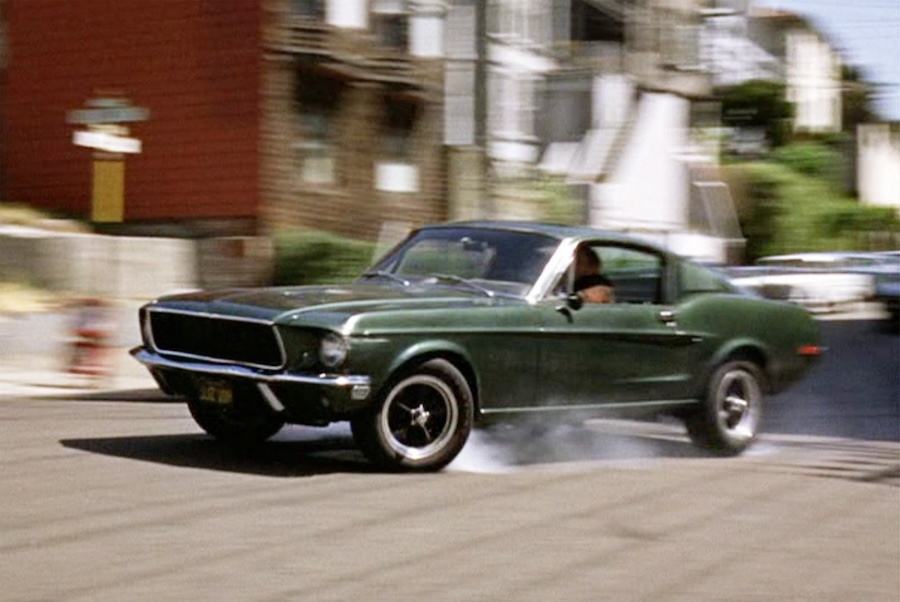
THERE ARE BAD COPS AND THERE ARE GOOD COPS – AND THEN THERE’S BULLITT.

Peter Yates hasn’t made a memorable film in ages. But there was indeed a time when he directed a few not-too-shabby movies and Bullitt stands as his crowning achievement, along with The Dresser (1983). It was his breakthrough, and the story goes that it was Steve McQueen who made sure he was hired because of a car chase he had filmed for a previous release, Robbery (1967). McQueen knew that his skills were needed to make the climactic moment of Bullitt as spectacular as possible.
Testifying against his own blood
Johnny Ross (Felice Orlandi), the brother of a Mafia boss, is preparing to testify against his own blood at a Senate subcommittee hearing in San Francisco. The chairman, Senator Walter Chalmers (Robert Vaughn), asks one of the city’s finest detectives, Lieutenant Frank Bullitt (McQueen), to guarantee protection for Ross. The witness is brought to a cheap hotel, but somehow two hit men are informed of his location and shoot both Ross and the cop guarding him. Ross barely survives and Chalmers makes it clear to Bullitt that if Ross dies the full responsibility lies with the San Francisco police department. Something is wrong with the case and Chalmers doesn’t seem too interested in the apparent danger of police corruption.
Ross is eventually murdered in the hospital and Bullitt decides to suppress his medical records and remove the body. As his superiors ask themselves what Bullitt is up to, the veteran cop goes after the hit men in a desperate attempt to save his reputation and find the man behind the murders.
Rising above its pretenders
There is nothing special about the story; the concept of a brave cop fighting ambitious and surprisingly stupid superiors as well as the Mafia wasn’t all that novel in 1968 and it has become a staple of far too many direct-to-video quickies. But several ingredients make Bullitt rise above its pretenders. When watching this film for the first time in many years, I noticed how realistic and bloody it is. Dispensing with any kind of 1960s campiness, Yates seems earnestly interested in the horrific details, especially at the hospital.
Not that he lets any of this get in the way of pure thrills. One of them is the long car chase that has become the most famous in cinema history. It seems to go on forever, moving all over San Francisco, involving two cars; Bullitt in a Ford Mustang chasing the hit men in their Dodge Charger. At first there’s music building the tension, but when the chase starts for real it is replaced by the sound of screeching tires and revving engines as the cars fly over the hills and down the slopes of the city. It looks positively dangerous (probably because the shoot really was risky at times), but it’s a beauty to watch editor Frank P. Keller combine Yates’s versatile shots in exciting ways. There’s a freshness to the filmmakers’ experimental camera angles that is also evident in several other sequences, and a timelessness; the movie could have been made ten years ago by Michael Mann.
Another reason to watch this movie is of course McQueen’s performance. When you talk to Bullitt he may not make much noise, barely even looks you in the eyes; he takes time observing events around him… but when you need him to jump into action, he virtually explodes.
We all want to be cool like Steve McQueen
McQueen also conveys the feeling that his character is a man of fierce integrity. We all want to be cool like him – and we do want that awesome Lalo Schifrin soundtrack to accompany our lives.
Bullitt 1968-U.S. 113 min. Color. Directed by Peter Yates. Screenplay: Alan R. Trustman, Harry Kleiner. Novel: Robert L. Pike (“Mute Witness”). Music: Lalo Schifrin. Editing: Frank P. Keller. Cast: Steve McQueen (Frank Bullitt), Robert Vaughn (Walter Chalmers), Jacqueline Bisset (Cathy), Don Gordon, Robert Duvall, Simon Oakland.
Trivia: When the rights to the novel were first bought, Spencer Tracy was considered for the lead. McQueen based his character on real-life San Francisco detective Dave Toschi, famous for hunting the Zodiac killer. Katharine Ross was offered the part of Cathy.
Oscar: Best Film Editing.
Last word: “I originally set Bullitt in New York City but McQueen and the producers wanted to shift it to San Francisco. I had lived there one summer while doing an internship with a law firm, and I knew the city. I was ecstatic. I had learned that when you drove a light car like a Ford downhill in San Francisco, as we often did at 2 a.m., it would take off and fly through the air as you crossed some of the intersections. When we were discussing Bullitt, I suggested a Mustang, which was still quite a new car model in 1968. I wrote the car chase in detail, including locations, the low camera on the bumper of the following cars, and the hub cap coming off as it bashed against the wall. Steve couldn’t wait to try it.” (Trustman, The Aspen Business Journal)
